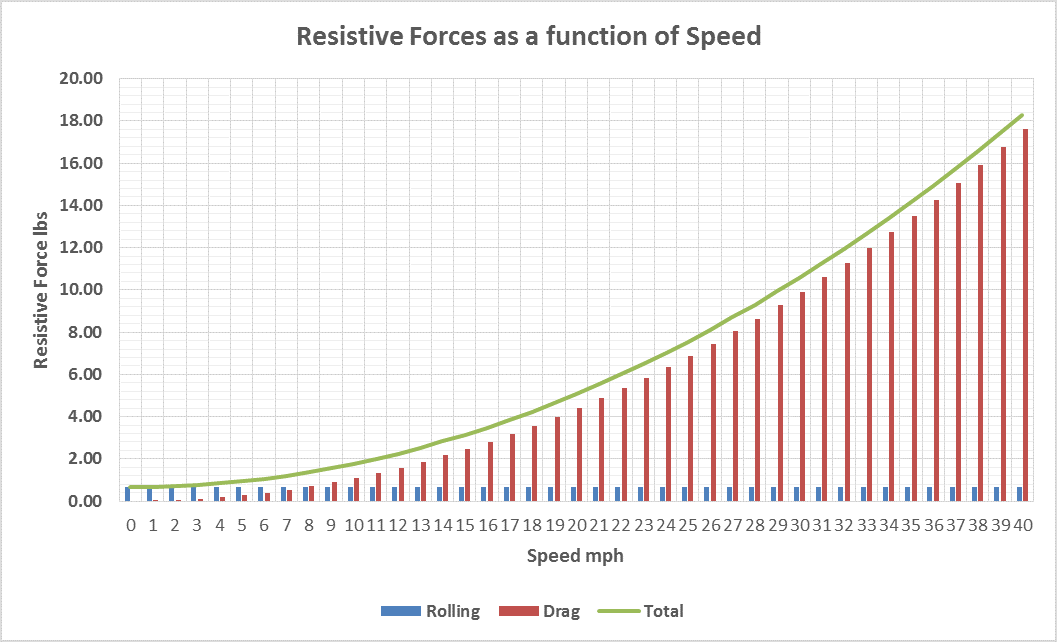Flats Resistance Forces
Riding on flats including sprinting implies the slope measured by θ in the Cycling Force Equation is 0. This leaves Rolling Resistance and Aerodynamic Drag as the two resistance forces the cyclist must contend with. Rolling Resistance is a minor nuisance, but aerodynamic drag is a major concern and limiting factor. The force equation is therefore:
CycleForce =ForwardForce – RollingResistance – Drag
When the Cyclist Pedaling produces a ForwardForce equal to the resistance forces, the CyclistCycle moves at constant velocity. When it is greater, the CyclistCycle accelerates to a higher speed.
Flat Resistive Force Magnitudes
What are the sizes of resistive forces on the flats? This chart shows them as a function of speed. Rolling Resistance is a speed-independent and a function of the rider weight and the surface type. Aerodynamic Drag is dependent of a number of factors, but predominantly the CyclistCycle speed. For Drag, speed is the sum of the cycle and wind speed. Here we are assuming a 150 lb cyclist riding a 16 lb bicycle in the hood position and no wind.

At slow speeds, rolling resistance is dominant until 8 mph where they are approximately equal. Above 8 mph, Drag quickly becomes dominant and is the limiting factor to CyclistCycle speed.
Flat Power Expenditures
We assume an Elite male cyclist weighting 150 lbs riding a 16 lb cycle and ask what is the power expenditure as a function of the desired velocity. We can already tell we expect it to get significant primarily because of aerodynamic drag. Again, we compute the power by multiplying the force equation by the velocity.
From the Coggin Table, we know this cyclist would be expected to produce a peak of 24.04 Watts/kgm for a period of 5 Seconds, and an absolute power of 1611 Watts. This would correspond to a 5 sec Sprint Speed of around 40 mph, with Time Trial speeds at 28 to 32 mph.

Does that seem reasonable?
Mark Cavendash indicated his max Power Output was 1580 Watts which was assumed to be a 5 sec time. The fastest time-trial is Rohan Dennis’ stage 1 of the 2015 Tour de France in Utrecht, won at an average of 55.446 km/h (34.5 mph). With some many other factors such as wind, it is hard to come up with a single number. It seems that cyclists may hit in the high forties for short stretches, but seem to be in the mid Thirties on longer time trials. However, the above chart does indicate that at 1580 Watts, the CyclistCycle would be moving around 34 mph.
Next Topic: Starting Up
